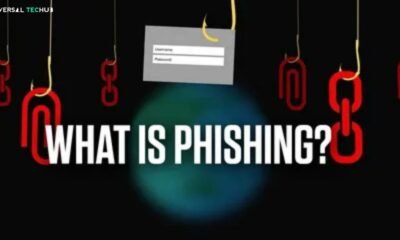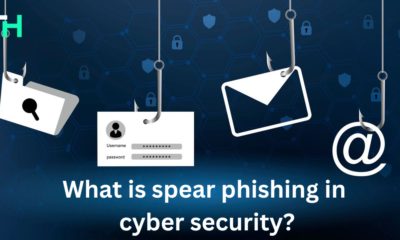Social engineering attack
Baiting Attacks Explained: A Closer Look at Cyber Threat Tactics

The internet’s popularity stems from its ability to provide a wealth of information and various opportunities. We can say that every business and even every person relies on the internet. However, just as everything in the real world has both positive and negative effects, the internet also poses a significant risk. Cybersecurity is crucial because cyber criminals can employ various strategies to breach a system, steal personal data, and compromise security. One most famous tactics is the baiting attack. Cybercriminals use this deceptive technique to lure unsuspecting individuals into compromising situations. So, in this article, we are going to discuss baiting —what it is, it’s different forms, how it works in cyber security, it’s implications for cyber security, and how to protect yourself from falling into this deceptive scheme.
What is baiting?
Cybercriminals can use baiting, a social engineering attack or technique, to trick individuals. Social engineering relies on manipulating an individual’s emotions and psychological tendencies to deceive them into disclosing their condition. This can lead to the disclosure of sensitive information and compromise the victim’s system. In baiting attacks, the attacker assumes the role of figurative fishermen, dangling an enticing lure to attract their target. This bait typically comes through tempting offers such as free programming, downloading media, or financial prizes. These lures aim to entice the victim into clicking on harmful links. Therefore, this downloaded malware has the potential to infect the system’s files or reveal sensitive information.
There are various types of bait available in the digital world.
Baiting can take place in various forms. The purpose of this type of baiting is to harm sensitive data, exploit human vulnerabilities, and highlight greed, curiosity, and hurry. Here are some commonly used types or forms of baiting:
- USB Baiting
- Email Baiting
- File Sharing Baiting
- Fake website baiting.
- Social media baiting.
USB Baiting:
Cybercriminals can leave an infected USB drive in any public place, such as coffee shops or parking lots. Finding a lost USB with valuable files might seem like luck, but it is risky at the same moment. People often plug these lost USBs into their computers and phones out of curiosity. When the USB connects to the system, it initiates the installation of malware or the execution of malicious code.
Email Baiting:
Cybercriminals can send spear phishing emails to many people that contain urgent requests or enticing offers. These offers might be fake job offers, security alerts, prize offers, or discount offers. The email includes specific links and attachments. Upon clicking these links, the device automatically installs the malware or facilitates credential theft.
File Sharing Baiting:
Attackers upload malicious files on file-sharing platforms, often using eye-catching titles to entice people to click on them. These files can be pirated software, trending movies, or any popular music that attracts attention. Unsuspecting individuals may unknowingly download these files, leading to the infection of their devices with malware or ransomware.
Fake Website Baiting:
Cybercriminals or attackers can create fake websites, such as shopping sites, banking portals, and social media sites. These websites can draw in individuals, prompting them to click and interact with them. These fake websites lure the person’s attention to enter their credentials and personal information which attackers later use.
Social Media Baiting:
Attackers may create fake profiles on social media to grab someone’s attention. These profiles pose as celebrity profiles, friend profiles, or even customer service representatives. They engage the person with continued activities on social media and lure victims with exclusive content, discounts, or help to resolve issues. Ultimately, they are tricking the person to reveal personal information and to click on any malicious link.
Read more:
Spear Phishing Definition: Targeted Cyberattack Explained
Spear Phishing Examples: Protect Yourself
Mitigate baiting attacks
The good news is that you can mitigate your risk of failing to bait the victim into baiting attacks. This requires a combined approach of technical controls, user education, and vigilance. Here are some effective strategies to conclude the discussion:
Security Awareness Training:
Understanding the internet before using it is crucial. The user must know the benefits but also the drawbacks or side effects of the internet. So, educate users about the risks of baiting attacks and how to recognize malware, suspicious links, emails, or files. Users must verify the legitimacy of the offer or exercise before downloading or clicking any unfamiliar content.
Endpoint Protection:
Convey end-point security solutions, such as antivirus programs or software, intrusion detection systems, and firewalls. Users should be able to identify any malicious activity on the device, and then take proactive measures to prevent baiting. Execute severe access control and constantly update the software and firmware to fix known vulnerabilities.
Email Filtering:
Use email filtering technologies to detect spammy emails. By using these technologies, users can scan inbound emails to detect spear phishing attack attempts and malicious attachments. Arrange the filters to block the phishing email, sender, contact, and domain. This will prevent the individual from sending any further emails. These filters also alert the authorization system about potential threats.
USB Security Policies:
Uphold USB security policies that restrict the user from using external storage devices. Set up the device so that it requires authorization when an external device connects to the system network. Implement device encryption to mitigate the risk of lost USB drives. Also, implement remote wipe capabilities to reduce the risk.
What is spear phishing attack? A detailed guide
What is spear phishing in cyber security
Real-Time Examples of Baiting
Cybercriminals send emails posing as legitimate organizations, such as banks or government agencies, offering enticing offers or urgent requests. For example, an email claiming to offer a tax refund or a prize notification may prompt recipients to click on a link to claim their reward. However, the link directs the victim to a fraudulent website that either steals their login credentials or installs malware on their device.
Cybercriminals post fake job postings on authentic job search websites or social media platforms to gain the attention of many job seekers. Cybercriminals entice job seekers with enticing offers, such as a high-paying position that requires minimal effort. They approach interested individuals, asking them to provide personal data or pay upfront fees for training and equipment. Such job offers are usually fraudulent. The victim of these kinds of scams may end up losing money or becoming a victim of identity theft.
Closing Thoughts!
Baiting attacks are a serious cyber security threat that involves identity theft and exploits human vulnerabilities. By understanding baiting, its forms, and its implications in cyber security, the individual and company can better protect themselves. It can be challenging to identify spear phishing emails, attachments, and other malware, but avoid clicking on any links sent by a third party without thorough analysis. With education, technical controls, and proactive security measures, we can mitigate the risk of malicious activities accessing our information. Keep in mind that as security strengthens day by day, cybercriminals can refine their attack strategies with time. Being vigilant and alert is crucial for safely navigating the digital world.
Read more blogs:
AI-Driven Transformations How Deepfakes Will Reshape Marketing in 2024
How to Choose the Right VPS Hosting in Germany for Forex Trading
How do spear phishing attacks differ from standard phishing attacks

-

 Phishing attack8 months ago
Phishing attack8 months agoWhat is Spear Phishing and How You Can Identify This Scam?
-

 Social engineering attack7 months ago
Social engineering attack7 months agoWhat are Social Engineering Attacks – A Complete Guide to Cyberattacks Prevention
-

 Social engineering attack9 months ago
Social engineering attack9 months agoSpear Phishing Attack: A Targeted Cyber Threat
-

 Social engineering attack9 months ago
Social engineering attack9 months agoWhat is spear phishing attack? A detailed guide
-

 Social engineering attack9 months ago
Social engineering attack9 months agoWhat is spear phishing in cyber security?
-

 Phishing attack7 months ago
Phishing attack7 months agoWhat Are Phishing Emails? A guide for you
-

 Phishing attack3 months ago
Phishing attack3 months agoWhy is Phishing Still a Major Cyber Threat? Everything You Need to Know
-

 Social engineering attack9 months ago
Social engineering attack9 months agoSpear phishing vs phishing: Understand the Risks
























